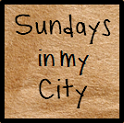
Pablo Picasso was born in Málaga, Spain. A child prodigy (Picasso could supposedly draw before he could talk), he first studied painting with his father, then at the School of Fine Arts in la Coruna, Barcelona and Madrid. By 1904 he had settled permanently in Paris. As a teenager, Picasso painted fairly realistic portraits and landscapes. He then went through his so-called blue and rose periods from 1901 to 1906, in which he depicted such things as poverty-stricken children and circus scenes. In 1907 he painted "Les Demoiselles d’Avignon," a distorted portrait of five prostitutes that is considered one of his most revolutionary pieces. This painting marked a break with the realist tradition and opened the door for Cubism, an abstract style that reduces subjects to geometric forms. By 1912 Picasso had begun to experiment with textures, using newspapers, parts of objects and pieces of musical instruments in his art. Later in life, he practised a form of Neoclassicism and recreated paintings from such masters as Diego Velázquez, Édouard Manet and Eugène Delacroix. At various times, he also incorporated Surrealist, Expressionist, Post-Impressionist, and Symbolist elements into his art, as well as creating works as a sculptor, ceramicist and graphic artist.
Jean Cocteau (1189-1963) was a French writer, painter and theatrical figure, and for many years he and Picasso maintained a close friendship. Together they created a project in which Picasso presented his lithographic drawings, above, and Cocteau wrote poems about them. This series used the technique of transfer lithography, by which the tusche drawing is made on paper instead of on the lithographic stone. The drawing is then transferred to the stone and printed in the usual way. This freed Picasso from the need to work directly on stone.
Picasso first met the newly divorced Jacqueline Roque in 1953, and they eventually got married in 1961. In November 1956 he set to work on Jacqueline's portrait for an exhibition poster, above. Hardly ever satisfied, he started on a second three-coloured portrait a few days later.
Picasso created the "Toros Y Toreros" (Bulls and Bullfighters) series, above, in 1961. He was fascinated by bullfighting, a theme that represented his cultural heritage and preoccupied him during most of his career. He developed his passion for bullfights as a boy growing up in the city of Málaga, where he was introduced to the sport by his father. The young artist was captivated by the spectacle of man versus beast, the feeling that life can end at any moment, the bravery of the bullfighter, and the culmination of a wild animal's life. He continued to attend bullfights while living in France, inviting friends and family to join him. The drawings for "Toros Y Toreros" covered a period from 1950 to 1960, during which time he enjoyed seeing the leading bullfighter, Dominguin, bullfight in the arenas of Nîmes, Arles, Frejus and Vallauris.
The ceramics created by Pablo Picasso, ("Petit Visage No. 12", 1963 (top plate) and "Plate with a bouquet and an apple", 1956, below), illustrates the idea that for a creative person there is no such thing as "too late". Picasso became interested in ceramics when he was over 60. After the liberation of Paris and the end of World War II, Picasso spent more and more time in the south of France. In 1946, he visited a pottery exhibition in the town of Vallauris, where pottery has been produced since Roman times. There he met Suzanne and Georges Ramié, owners of the Madoura ceramics workshop and he accepted their invitation to model a few small clay pieces. Picasso began to work at Madoura about a year later, in the autumn of 1947. The Ramié family gave him access to all the tools and resources he needed to express his creativity with ceramics and, in exchange, the family would produce and sell his ceramic work. This collaboration with the local ceramicists spanned 25 years. It was during this time that Picasso became acquainted with his future second wife, Jacqueline Roque, who worked there as an assistant.
In 1934 Picasso was commissioned by the New York literary entrepreneur George Macey to illustrate a special edition of Aristophanes’s Lysistrata - a Greek comedy about a woman who sets out to end the Peloponnesian War by convincing her countrywomen to withhold sex from their war-bound husbands and lovers. Macey’s edition included six original etchings by Picasso and 34 line block reproductions of the drawings. Picasso’s signature style of simple, elegant lines and expressive sensuality seemed to be a perfect fit for the ancient classic, which, though comedic in nature, also offered a far-sighted backdrop for Picasso’s own anti-war paintings a few years later.
Despite the military subject matter of the series, the works were filled with harmony and peace. At the time Picasso was in a relationship with Marie-Thérèse Walter, his mistress and the mother of his daughter, Maya Widmaier-Picasso. Marie-Thérèse's features can be recognised in most of the female images from that period.
Picasso's etching "Two Elders and Ships" from the Lysistrata series can be seen above.
* This post has been shared on No Rules Weekend Blog Party, All Seasons, Amaze Me Monday, The Good. The Random. The Fun., Wordless Wednesday (on Tuesday), The Keeping It Real Link-Up, Tuesday's Treasures and Our World Tuesday.









































21 comments:
I'm very envious. I love Picasso's work - I remember dragging R round the Picasso Museum in Barcelona. My two girls decided to go for an explore instead and R came under duress. I loved it though and have a print of one of his paintings in my kitchen. Enjoy the rest of the weekend. xx
I love the rich detail you give in a post on things such as art and history. Great info and I thoroughly enjoyed my visit to the art display.
It's been a very long time since I've been to a gallery. - Margy
I enjoyed this Gallery visit so much; you are a good 'docent' ... and it makes me realize, as your earlier visit did, that we miss a lot by living in a not-so-big city......I have to visit fine exhibits like this through the Internet -- thanks for making that easy and fun for me!!
I have mixed feelings about Picasso, probably because I haven't seen enough of his work to have a strong opinion. But coincidentally, I just heard that Antonio Banderas is playing Picasso in - I think - a series made by National Geographic, though that sounds unlikely, doesn't it? The Nat Geo part, I mean...Banderas as Picasso will be excellent, I imagine.
Five years ago I saw an exhibit of Picasso's ceramics. I wanted to go home with some of the pieces. :-) Until that exhibit, I had no idea he worked in ceramics. Thanks for all the wonderful information about Picasso.
The View from the Top of the Ladder
Picasso is a mixed bag for me. Some of his art I like, but he couldn't stay away from women while he was married. Also, from some of his paintings it sounds like (others who wrote about his life, like Creating Minds,"1993 from Howard Garner), that he adopted some of his views to the paintings that drew attention (meaning: not much integrity - or he had psychological issues, which may also answer the many affairs he had).
I saw some of his later work in Musee Picasso in Paris - a fairly small museum, with his paintings and some of his ceramics and statues (I actually liked those the most).
whoa, interesting stuff! Many thanks for sharing this with All Seasons! Have a great week!
WOW!! These are so cool!!
How cool! This isn't the type of art I frequently drift toward, but I admit these are pretty clever.
Thanks for sharing at https://image-in-ing.blogspot.com/2018/04/appalachian-artistry.html
I love Picasso! I love how he challenged the boundaries of what art should be! I can imagine he had a wonderful sense of humor too though obviously, he was sad during his blue period.
How interesting, I feel I've learnt a lot from your post. What an interesting life Picasso had. Personally I feel more attracted to his ceramic work to his drawing, but he definitely had an unusual approach to his art and he was very original. I think you were so lucky to attend this exhibition.
#keepingitreal
I've never understood abstract art but it's good to know that he did other kinds of stuff, too!
...Picasso sure makes it look easy! Those simple lines are a treasure. Thanks so much for sharing this week, take care and stop again.
I learned a LOT about Picasso in this post - even though he's not 'my thing' - thank you for the education.
I´m such an art lover, really enjoyed reading about Picasso´s life and seeing his works (most of which I've never seen, I guess cause they were parts of private collection! Loved the Jacqueline's portrait #TheWeeklyPostcard
These are great.
I love these. I am such a fan of art. These are really good and pretty xx #sundaysnap
I don't understand much of Picasso,Lisa, but it's an impressive body of work. Thanks for sharing.
What a fascinating exhibition of Picasso. It was really interesting to see his simple sketch work.
Hi Lisa, I had no idea about anything about Picasso apart from te fact he was an artist, so thank you for sharing this in-depth post. Thta fact that he could draw before he could talk did make me laugh as I remembered my two with crayons (they were no Picassos). I do like the simplicity of Picasso's lithographic drawings, simple, but effective.
Thank you for linking up to #keepingitreal.
xx
I love Picasso and studied him when I took up Art back in my school days. He was so talented.
Really enjoyed reading about the exhibition Lisa.
Thanks so much for sharing with #MMBC. x
Post a Comment